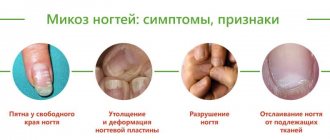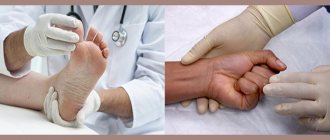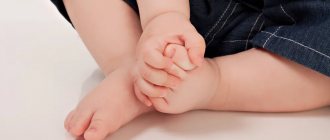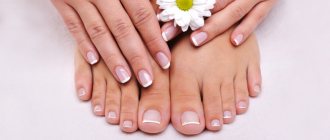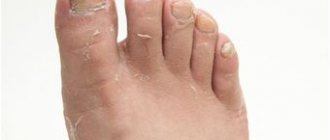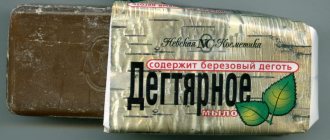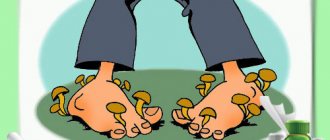Nail fungus or onychomycosis (medical name) is a disease that occurs when the nail plate is affected by a fungal infection. Onychomycosis affects 5 to 15% of people. The risk of its development increases with age, although the fungus is often detected in children. Every 10 years of life, the incidence increases 2.5 times. If in children it is 3%, then in older people it is already 50–60%.
Pathogens
Onychomycosis is caused by microorganisms from the kingdom of Fungi. The world of mushrooms is diverse, and not all of them are as pleasant as champignons, chanterelles or honey mushrooms, which we are used to seeing on our table. There are microscopic parasitic species that feed on the tissues of plants, animals, and humans.
The causative agents of onychomycosis consume the protein keratin, which is part of the nail plate, hair, and the upper (keratinized) layer of skin. About 50 representatives of parasitic fungi are known that can cause the disease.
They are divided into three groups:
- Dermatophytes. They account for 80% of onychomycosis cases. They are characterized by high survival and viability. Found naturally in soil;
- Yeast-like mushrooms. Among them is Candida albicans (microorganisms of the genus Candida), known to women, which causes thrush or vaginal candidiasis. Yeast-like fungi are 5 times more likely to affect fingernails than toenails. Toxic and impair the functioning of the entire body;
- Mold fungi. Onychomycosis caused by molds is rare. But it is the most dangerous, it progresses quickly, it can completely destroy the nail plate and spread to neighboring tissues.
Onychomycosis affects the fingernails and toenails, but toenail fungus is much more common on the feet. This is due to the fact that hands are given much more attention, washed more often during the day, and treated with antiseptics. They are always open and well ventilated except in winter when we wear gloves. And your feet are constantly covered with street shoes, house slippers, tights, socks, and they sweat more. These factors create ideal conditions for the development of foot fungus, because heat and moisture are its best “friends.”
The causative agent of onychomycosis penetrates the nail from different directions. The most common way is from above, from the side of the free edge of the nail plate. It is also possible to introduce it from the side from the side ridges or from below from the cuticle and nail growth zone.
Onychomycosis is most dangerous near the cuticle. In this case, the fungus slows down or stops the division of onychoblasts - cells of the growth zone under the lower nail fold. The nail stops growing in length, and the infected areas may not recover. A pathological change in the structure and destruction of the nail occurs.
Fungi rarely penetrate directly into the nail plate. First, their spores enter the skin around the nail or the spaces between the fingers through microcracks, cuts, abrasions, abrasions, and calluses. Then the colony begins to grow, the pathogen moves towards the nail plate, penetrates it and begins to parasitize.
Why does onychomycosis appear?
Fungi live in warm and humid places, and wherever such conditions exist, it is easy to become infected with them. For example, if you walk barefoot in public baths, swimming pools, showers or gym locker rooms, your chances of becoming infected are high.
Some diseases contribute to the development of onychomycosis:
- Diabetes. In patients with diabetes, the fungus is 3 times more common. Excess glucose in the blood creates favorable conditions for fungi to function. In the absence of sugar control and keeping it within normal limits, blood vessels suffer. The longer the illness, the more impaired the blood supply to the legs (diabetic foot syndrome). Wounds heal worse, infection occurs more easily;
- Poor blood circulation in the lower extremities caused by varicose veins, atherosclerosis (narrowing of the lumen, blockage of the arteries), thrombophlebitis (formation of blood clots in the lumen of the veins);
- Weakened immunity, immunodeficiency states (HIV), damage to the immune system. Reduce the body's resistance to any infections;
- Psoriasis. 90% of people suffering from psoriasis experience changes in the nail plate. Grooves form on it, cloudiness is present, depressions appear, and detachment of the nail plate appears. These factors increase the chances of infection with a fungus by 1.5 - 2 times;
- Hyperhidrosis, or excessive sweating of the feet, often causes onychomycosis in men;
- The presence of a focus of fungal infection in other parts of the body.
The risk group includes older people.
The cause of onychomycosis is often associated with the characteristics of the profession and improper care of the feet:
- poor care of feet and nails, lack of daily hygiene procedures due to neglect of personal hygiene rules or difficulties in their implementation (in bedridden patients or patients with limited mobility);
- work in damp, damp areas (greenhouses, greenhouses, vegetable stores), frequent wearing of rubber gloves or rubber shoes;
- professional sports;
- wearing uncomfortable, tight, narrow shoes or shoes made of artificial materials (leatherette), which creates a “greenhouse effect” and interferes with normal air exchange.
Predisposing factors for the development of onychomycosis include trauma to the nail or surrounding tissues, taking antibacterial or hormonal drugs.
In women, a common cause of fungus is prolonged wearing of gel polish. It creates a closed space between the nail plate and the coating, in which a fungal infection successfully develops. It is not recommended to apply gel polish to toenails; it is better to use regular decorative polish. Also, in women, onychomycosis appears after an unsuccessful manicure or pedicure in salons where high-quality disinfection of instruments is not carried out and sterility is not maintained.
Signs of onychomycosis
Most often, the fungus infects the big toes.
The following changes in the nail plate indicate a fungal infection:
- dullness, yellowing, loss of smoothness and shine;
- itching, redness, peeling of the skin around;
- delamination, fragility, friability;
- unpleasant odor;
- violation of the structure, thickening;
If you find yourself with at least one of the listed signs, you should immediately consult a doctor who treats nail fungus. This could be a podologist, dermatologist or mycologist.
A mandatory examination by a podiatrist to check for onychomycosis is required after an injury to the nail or the skin around it. If there are predisposing factors (varicose veins, diabetes, atherosclerosis, weakened immunity, excessive sweating of the feet, etc.), it is recommended to have a medical pedicure once a month, during which the doctor will carefully examine the nails and skin of the feet and identify changes in the early stages.
Complications
In an uncomplicated course, the disease causes symptoms traditional for the fungus, causing only severe discomfort in a person. But without treatment, onychomycosis can cause complications. Most often they manifest themselves in the addition of a bacterial infection.
Sometimes onychomycosis is very acute with the appearance of blisters, ulcerations and weeping areas on the skin next to the nail. In severe cases, the disease takes on a generalized form. This means that nail fungus spreads to internal organs and systems, and then the patient will require emergency hospitalization.
Is nail fungus dangerous?
Onychomycosis is a disease that causes more psychological discomfort than physical illness. To understand what we are talking about, just look at a photo of toenail fungus on the Internet. It is characterized by a slow course and does not cause pain, fever or other symptoms that require urgent medical attention.
People are in no hurry to treat nail fungus. After all, when the affected area is small, you can paint it with varnish, wear socks or closed shoes in front of strangers. And the problem of psychological discomfort is temporarily solved. But, unfortunately, everything is not so simple. If you do not destroy the fungal infection, it will not disappear anywhere, but will continue to affect the nail. And onychomycosis is contagious. An infected person poses a danger to his family and others.
Myth 3. If you find a fungus, you need to throw out all your shoes.
No, it's enough to process it. There is a special device that fits into shoes, emits ultraviolet light and has an antifungal effect. The sun and radiator, by the way, do not kill mushrooms. You can treat the inside of shoes with a 40% vinegar solution (for this, the vinegar essence is diluted with water) or buy inexpensive domestic products for treatment at the pharmacy. For example, Samarovka liquid or 1% chlorhexidine digluconate (gibitan). Wipe the inside of your shoes with them and keep them in a sealed bag for 2-3 hours. Another option is to treat your shoes with 25% formaldehyde. Afterwards, you should wipe your shoes with ammonia - this reduces the risk of allergies. It is also better to disinfect underwear and bed linen, stockings, socks, tights, wash them and, if possible, iron them damp.
How to prevent infection?
The best cure for nail fungus is prevention.
To protect yourself from infection you must:
- use medical disinfectants with the inscription GOST (capable of killing onychomycosis, tuberculosis, hepatitis, HIV);
- monitor the condition of the feet and nails, the main rule is that the feet should be clean and dry;
- take care of shoes, regularly disinfect and dry them; it is convenient to use electric dryers for drying;
- treat your feet with drying agents or antiperspirants if your feet sweat a lot;
- in the pool, sauna, and gym locker rooms, do not walk barefoot, but wear rubber flip-flops with closed toes;
- wear comfortable shoes made of natural, breathable materials;
- Do not use other people’s towels, shoes or manicure accessories.
These tips will help you prevent onychomycosis and keep your nails healthy and well-groomed. They are effective not only for the prevention of fungus, but also other problems: ingrown toenails, calluses, corns.
Features of the treatment of onychomycosis
Advertising on TV promises to easily and quickly cure nail fungus with the help of antifungal (fungicidal) creams, solutions, and varnishes. We are promised that “The drugs Lamesil, Exaderil, Mikazan, Mecoderil and others penetrate deeply into the structure of the nail, effectively destroy the fungus, and return the nails to their previous appearance in 2-3 applications.” But why then does such self-treatment of toenail fungus give good results in a maximum of 10% of cases? Because these remedies themselves are effective only in the early stages of the fungus, when the symptoms are not yet obvious and almost invisible.
Manufacturers often lie by saying that the drugs are produced in Europe and contain good active ingredients. In practice, the most effective against nail fungus (onychomycosis) is Clotrimazole (Climbazole). Most drugs are simply very well advertised and cost 2000-5000 rubles, but do not contain Clotrimazole (Climbazole). You cannot buy specialized drugs in regular pharmacies, for 100-1000 rubles, even if it says Clotrimazole (Climbazole), it will not be in the chemical composition since production is very expensive.
This drug is used in podiatry centers and on properly prepared nails. We do not have the right to write the name of the drug, but you can ask us any question here.
Antifungal drugs are the mainstay of treatment for onychomycosis. Without them, no matter how much we would like to, we will not be able to defeat the infection. But they must be used correctly and thoughtfully. Medicine for nail fungus should be applied to a previously treated and prepared nail so that it has the desired therapeutic effect.
The first thing you should do if you suspect onychomycosis is to consult a doctor who will confirm or refute the diagnosis. If necessary, he will prescribe additional examination and treatment. Choosing a remedy for nail fungus based on reviews from the Internet, advice from friends, or advertising on TV will result in wasted time and money spent on unnecessary drugs. The same results will be obtained when trying to treat onychomycosis with traditional methods. Vinegar, garlic, onions, and medicinal herbs are not able to destroy the pathogen.
An important point in the treatment of onychomycosis is the disinfection of shoes and clothing that have been in contact with the infected area. If you do not do this, you can become infected again from your own things. Clothes must be washed at high temperatures (above 60 °C), ironed, and shoes must be treated with special disinfectants.
Myth 2. Fungi are more often contracted in a bathhouse or in a swimming pool.
In these places there is really high humidity, the skin steams and is easily separated from the body of an infected person, its particles settle on the floor, from where they can “stick” to the feet of other visitors. However, danger awaits you at every step. If you wear clothes that have come into contact with the body of a sick person, or dry yourself with a towel that he recently dried himself with, you can also catch the fungus. Everyone knows that you can't wear someone else's shoes. Including the slippers that are offered to you when visiting. Bring your own! Walking barefoot is also not an option - skin particles with mushrooms can get to you from the floor. Regular socks can protect you. But it’s better not nylon ones - they are too thin and retain sweat. It is better to try on shoes in a store using a cotton sock.
“You can become infected on public transport through handrails that a sick person holds,” warns Victoria Rukavishnikova. — We had a patient who caught a fungus in a fitness club through exercise equipment. It lies in wait for you even on the beach - sand mixes with particles of diseased skin. Even sunbeds can become a source of infection. Our patient, who sat in a sun lounger, developed pockets of fungi on her buttocks, which usually affect the feet. The solution is to go to the beach with your own shoes and towel. The latter must be regularly washed and ironed with a damp iron (or steamed), since mushrooms die at 100 degrees.
